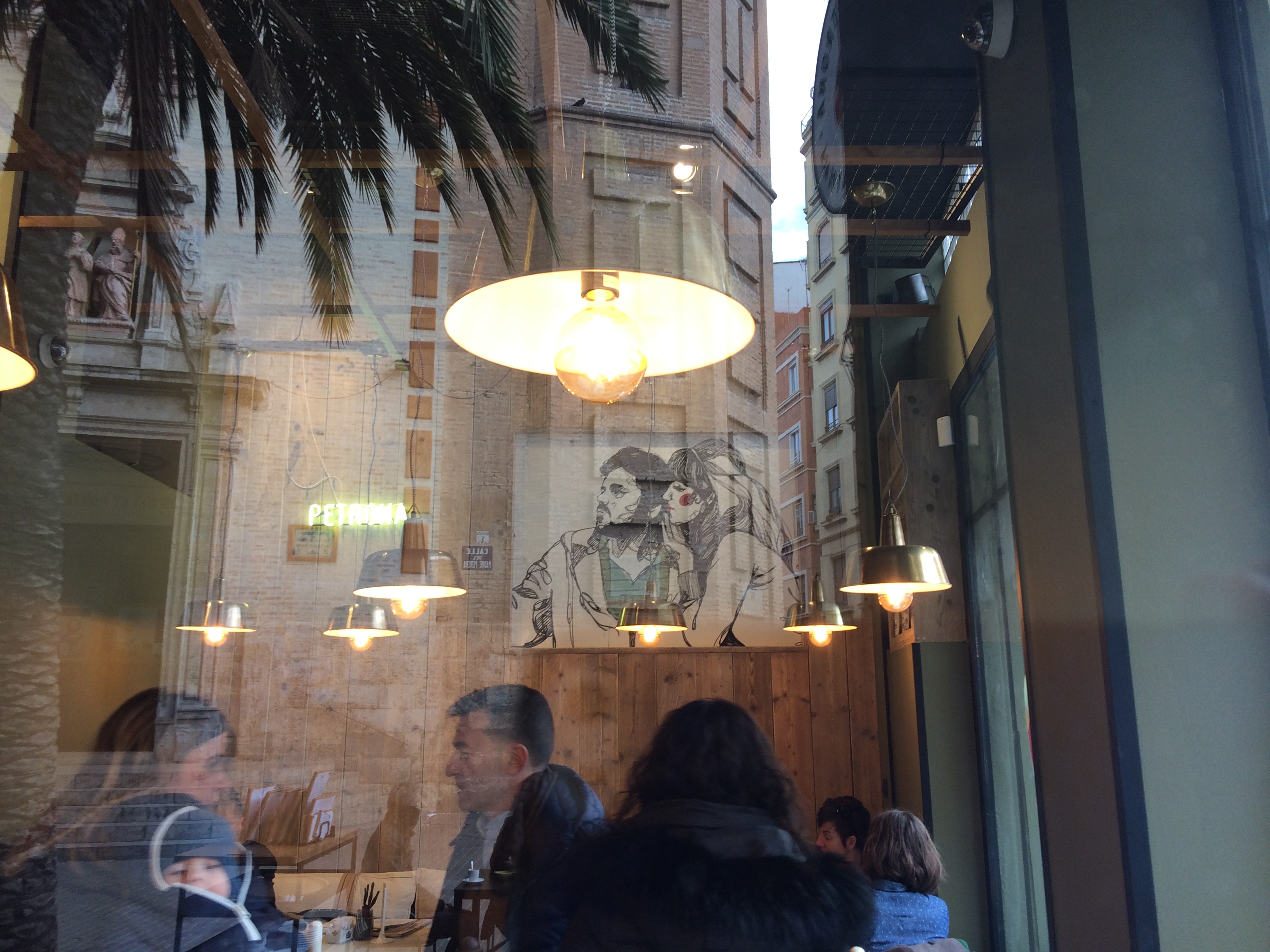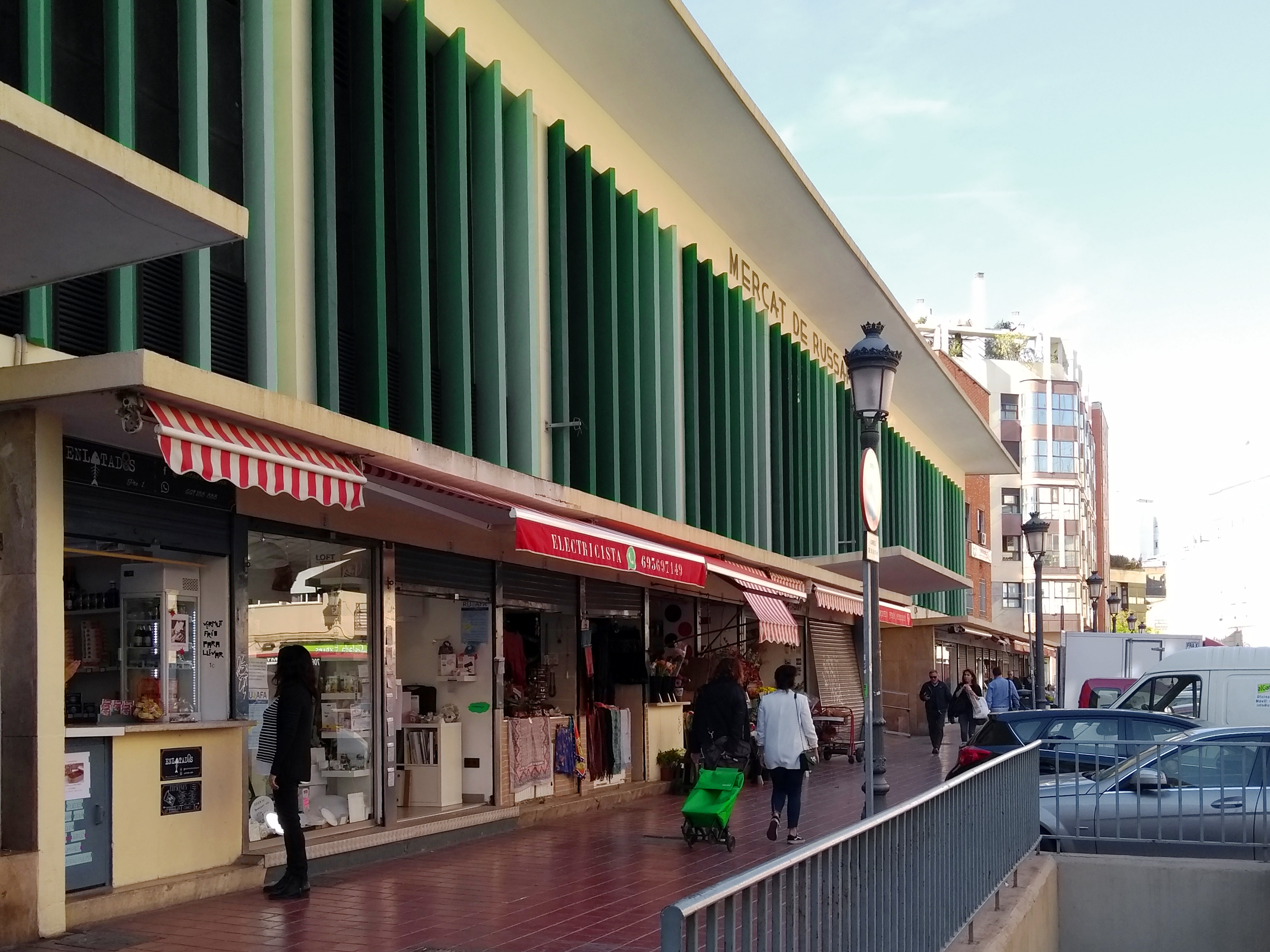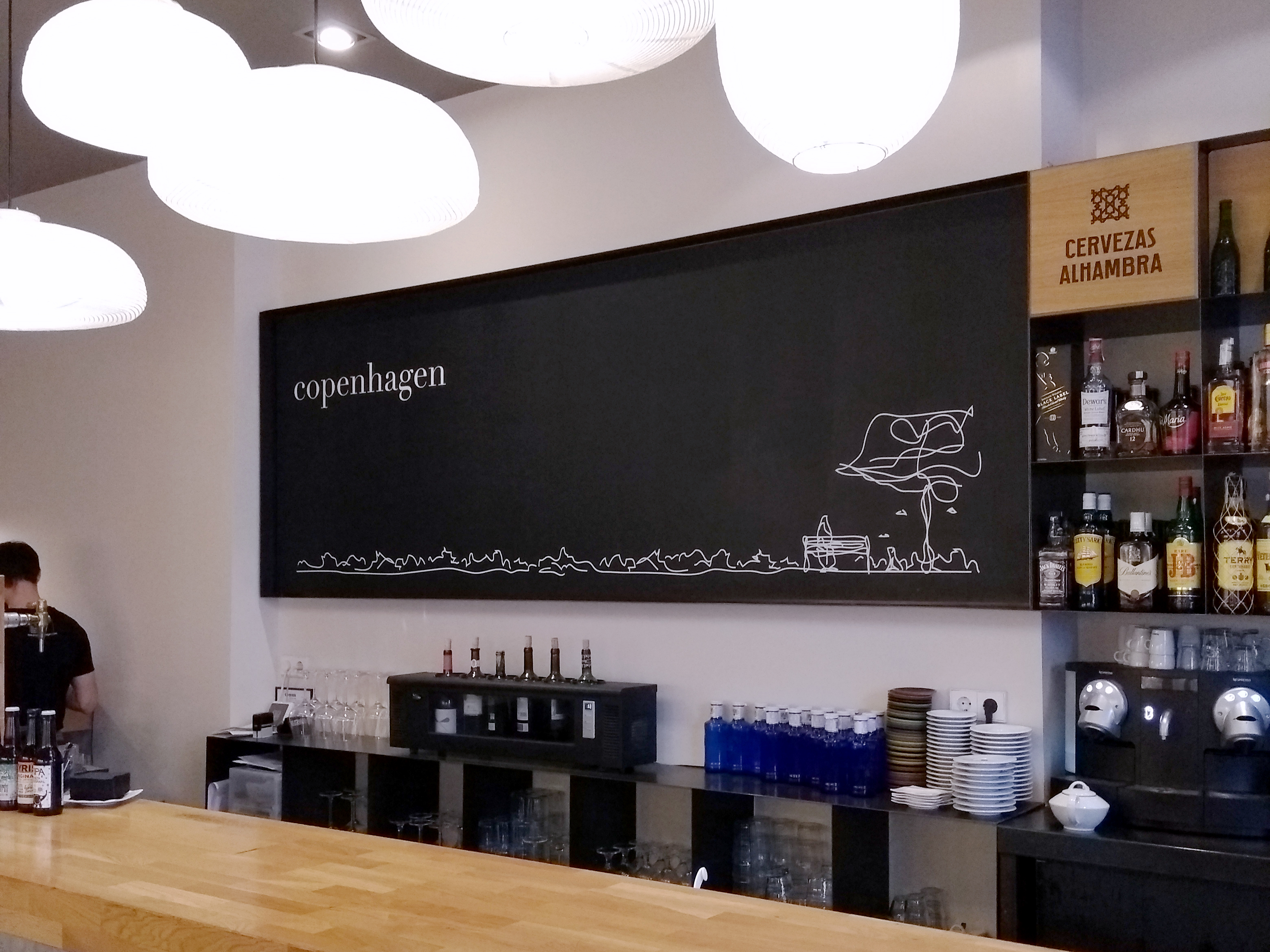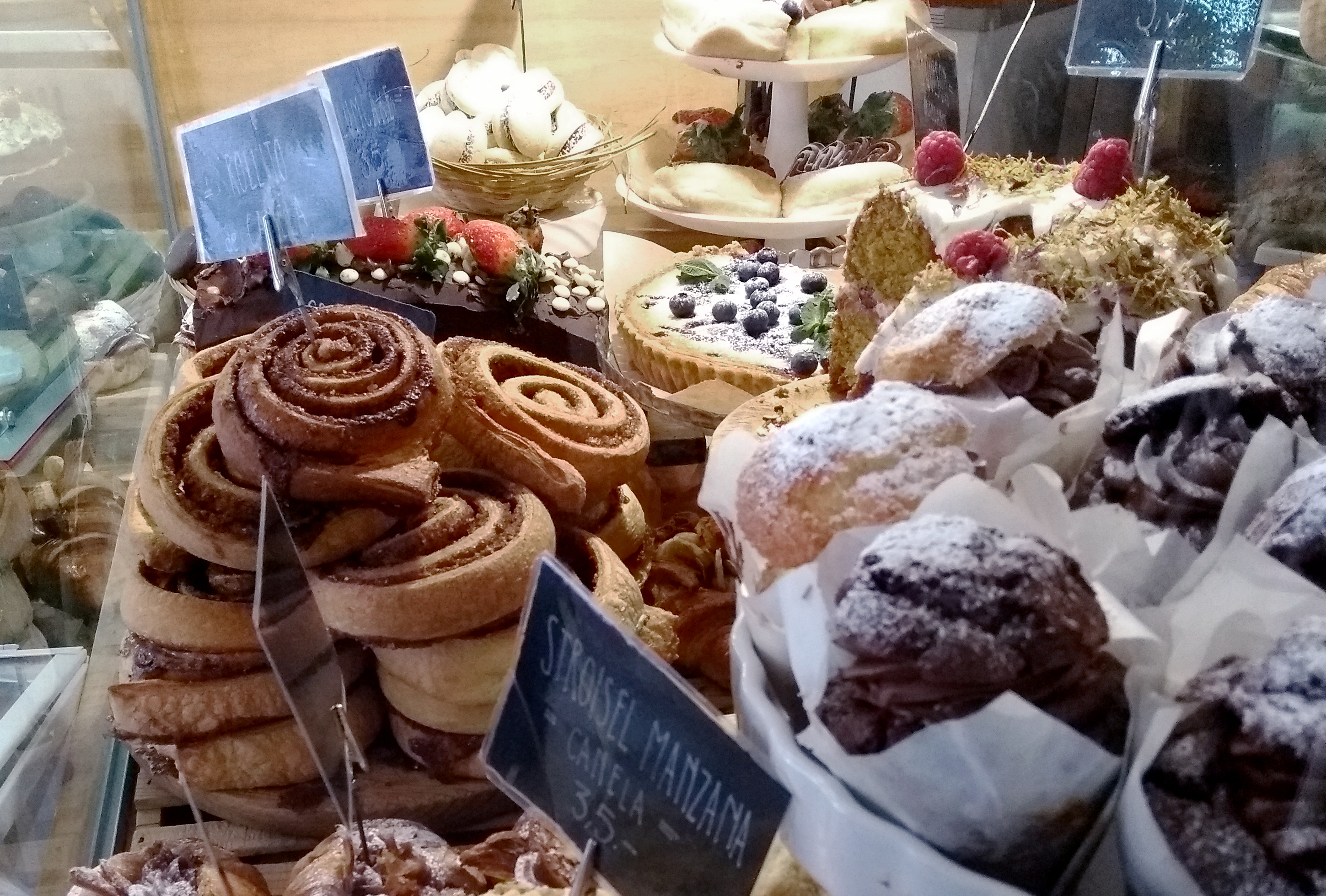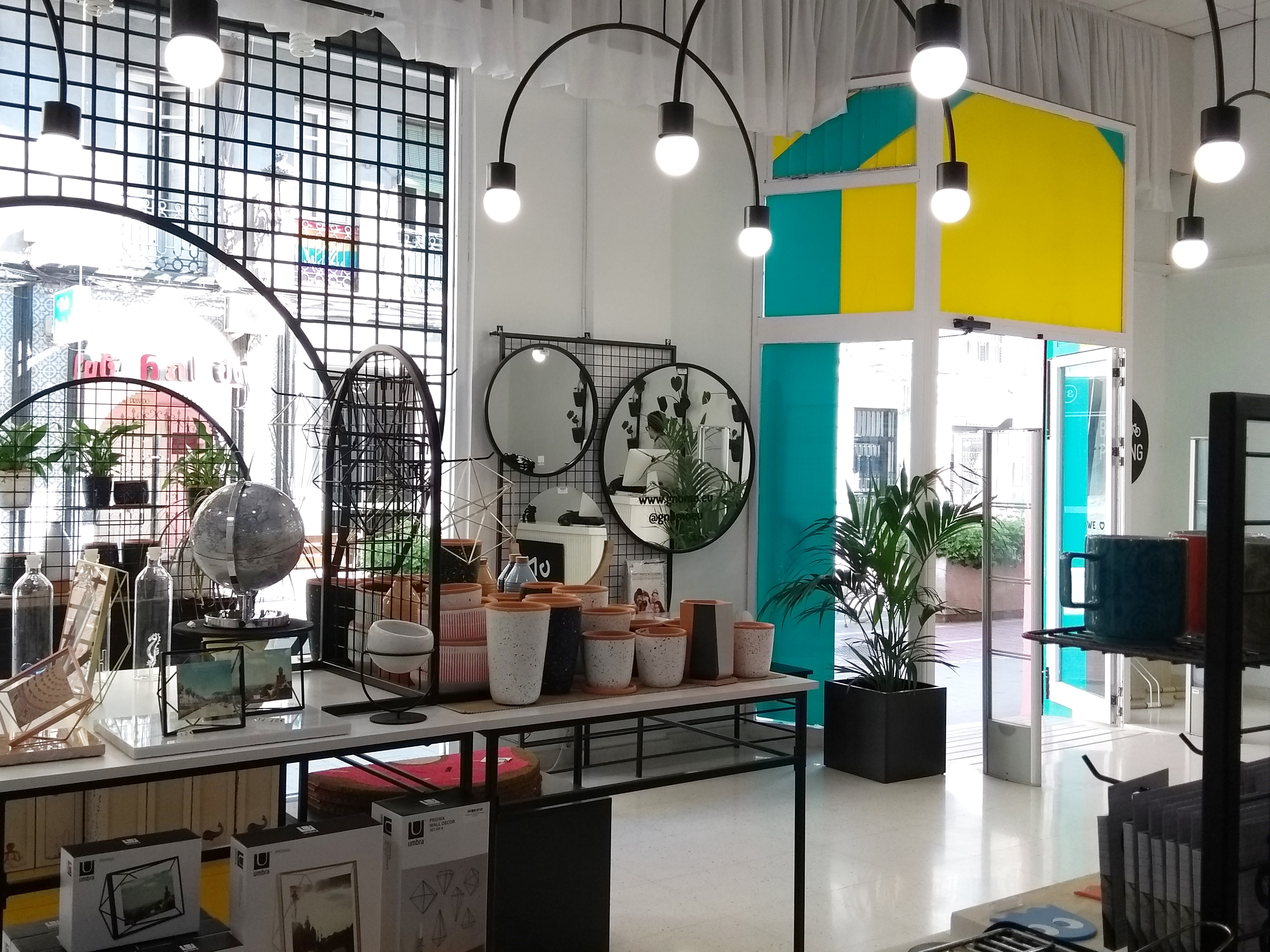Like much of Valencia, orange trees line the streets of Ruzafa, locals mill by them headed for their nearest market and the almost-daily sunshine dances across the rooftops. The vibe that runs through the neighbourhood, however, is unlike much of the rest of Valencia. Much like the oblique streets of Ruzafa’s old centre – a deviation of the Eixample’s grid system – this barrio goes its own way.

Ruzafa offers a rich visual and cultural experience (Photo: Maite Bäckman)
Until recent years, the neighbourhood’s reputation was not one that attracted visitors. Predominantly homing the city’s working class, its past is shadowed with a history of those battling drug and alcohol problems and drifting immigrants. With cheap rent, creatives saw opportunity and artisans moved to the area to maximise their budget, gaining both studio and living space. The result was the area’s transformation into a creative hub. Over 10 years Ruzafa has increasingly seen restaurants and bars become the go-to meet up places and flats have become some of the most sought after in the city.
With this flurry of interest in the district, Ruzafa has managed to clean up its image. Streets have expanded: widening their pavements, adding cycle paths and increasing premises’ outdoor terraces. Whilst the upper area of Eixample grew by building up, Ruzafa’s modernist buildings remain low, with many reaching only four or five stories high keeping the original character of the neighbourhood within its intimate boundaries.

Bold colours have transformed the exterior of the central market (Photo: Maite Bäckman)
Updating Ruzafa, the central market changed its grey panels to a gradient of bold colours that encircle the exterior. Inside, local vendors trade everything you would expect at a local market with those selling organic produce becoming particularly popular with vegetarian cuisine and bio culture growing in the area. The market feels like the heart of the neighbourhood, just as popular with locals as tourists, it’s a central point in the life of locals and for Ruzafa’s economy and culture.
Elsewhere in the area, colourful facades melt from rich primary colours to pastel shades. Streetscapes evolve as they are utilised as canvases for street artists. The city’s El Carmen region was once the primary exhibition space for urban artists, but now illustrators and mural artists are putting the jaunting streets of Ruzafa on the map for art lovers; creations decorating the walls of Carrer del Clero, and the adjacent streets, with intricate designs and musings on contemporary politics. The work of previous Valencia resident Paula Bonet decorates the premises of Doña Petrona; owners continuing to preserve the interior mural, which is older than the restaurant itself.
The streets also transform during the popular festival of Las Fallas, recently recognised by UNESCO as an expression of intangible cultural heritage. Throughout much of March, the entire city is transformed by light installations, but Ruzafa tops them all by hosting a competition to ensure their displays are some of the most extravagant around. Over the festival, locals create elaborate designs of streetlights, competing for the title of best in the festival; a particularly fierce rivalry between the two parallel streets of Carrer de Sueca and Carrer de Cuba, leads to stunning digital displays for the crowds. By night these lights dance to music creating a light show of pure joy and magic.
With this modernity and gentrification, Ruzafa battles to be faithful to its roots whilst fulfilling its economic needs. Moorish prince Abd Allah al-Balansi named the area, at the time on the outskirts of the city, choosing it as the site to create his landscaped gardens during the 8th century. Despite its name meaning ‘garden’ in ancient Arabic, green spaces and gardens are few and far between: a point of contention for residents. Locals now request that empty spaces and disused buildings are converted to gardens and play parks rather than real estate, to satisfy the population that currently lives there, rather than the demand for accommodation.
With Ruzafa fast becoming Valencia’s most popular place to live, its population is changing into a mix of wealthy families and artists who embraced the DIY approach in their careers. Reminders of its colourful Arabic and multicultural past are found in the commercial activity that thrives in the area. The the long standing Horchaterias continue to be popular with locals and visitors looking to taste the fragrant, creamy chufa based drink, whilst new establishments thrive with the demand for dishes with roots outside of the country.
Restaurants, Bars & Cafés
When it comes to food, Ruzafa’s offerings are as eclectic as its origins. Michelin-starred chef Ricard Camarena takes diners on a trip around the globe at Canalla Bistro (Carrer del Mestre Josep Serrano, 5). Start in Beijing with melt-in-your-mouth steamed pork buns, tuck into a Pastrami sandwich à la Katz’s Deli in New York City, or stay local with Valencian oysters marinated four ways. Sharing is typical, but no one will blame you if you want to keep the platters to yourself.
Vegans and vegetarians won’t have any problems finding places to eat in Ruzafa, thanks to the Grupo Copenhagen’s trio of vegetarian restaurants Copenhagen (Carrer del Literato Azorin, 8) and Malmö (Carrer de Sueca, 46) in Ruzafa, and Oslo (Carrer Catalans, 8) in El Carmen. Copenhagen serves up a salubrious lunchtime menú del día featuring Mediterranean-inspired vegan and vegetarian dishes while Malmö incorporates Japanese elements to its menu and highlights newly added raw vegan creations.
Ubik Café (Carrer del Literat Azorín, 13) is more community centre than coffee shop. When it opened ten years ago, it was a harbinger of the hipster district Ruzafa was to become. All at once Ubik Café is a bookshop, art gallery, bar, restaurant, live music venue, and language exchange host—oh, and they serve pretty great coffee, too. It’s a homey place to kick back with a book and a glass of agua de Valencia, the typical Valencian cocktail made with fresh orange juice and cava.
Argentinean-owned café Dulce de Leche (Carrer del Pintor Gisbert, 2) draws you in with its display of colourful cakes and pastries. Their delights range from rich chocolate-chocolate cake enrobed in more chocolate, to light-as-air lemon cheesecake. Sip a cortado on the terrace to rest your legs or enjoy a delicious brunch—a growing trend in Ruzafa.
For something closer to home, head to Horno Valencia (Carrer de Sueca, 55), a local bakery that has been baking bread and pastries since 1932. Be sure to pick up their rosquilletas—the thin, crunchy breadsticks that are typically Valencian. Snack on them by themselves or dip them in your glass of ice cold orxata.
Even the most committed coffee snob won’t be disappointed at Bluebell Coffee Co. (Carrer de Buenos Aires, 3). Owner and barista Mariane is passionate about bringing the ‘Third Wave’ coffee movement to Valencia, so she only works with speciality coffees and roasts her own beans. Bluebell is lucky enough to have an interior patio with outdoor furniture surrounded by trees and flowers. The space also hosts various types of events from cupping workshops to exhibitions and live music.
From the outside, Bodega Bisoca (Carrer del Dr. Serrano, 20) looks like a typical off-license with stacked shelves lined with wines and liquors. However, this family-run bodega has been open since 1932 and has a rustic, exposed-brick cocktail bar in the back. Order a bottle of local D.O.P. wine from Valencia or learn how to vermutear—whet your appetite with friends over a glass of vermut—with one of their homemade vermouths, poured from an old wooden barrel. Not a fan of fortified wine? Bodega Biosca serves more than 150 different types of gin.
Art Galleries

Creativity is visible year-round, particularly during the Russafart festival (Photo: Maite Bäckman)
Held during the third weekend in May, Russafart opens the doors to artists’ studios, welcoming in everyone. The cultural and commercial creativity has been key in the evolution of Ruzafa from the once down-and-out barrio to the trendiest place in the city; contributing to this has been the open doors event. Many galleries, shops and independent artists sign up to the programme, which brings the audiences up-close to the craft and art of Ruzafa. Studios dotted along Carrer de Clero and its surrounding streets open their doors, while the spaces of creatives next to the commercial hub of Carrer de Cuba welcome in curious spectators.
For those not lucky enough to visit in May, one of the main coordinators of Russafart’s Open Doors Festival, Galería Imprevisual (Carrer del Doctor Sumsi, 35-B), hosts exhibitions year round. The gallery began growing in tandem with Ruzafa’s change in identity. Dropping by the gallery, the projects and exhibitions engage with social concerns, linking creativity and culture with ideas on politics and contemporary concerns.
A not-for-profit cultural association, the building of Sporting Club Russafa (Carrer de Sevilla, 5) is almost as fascinating as the art. Inside this old boxing gym, exhibitions take a variety of forms with a large space showcasing different mediums as well as studios for a number of artists working in different disciplines: painters, sculptures, photographers, architects and performers are all currently based here.
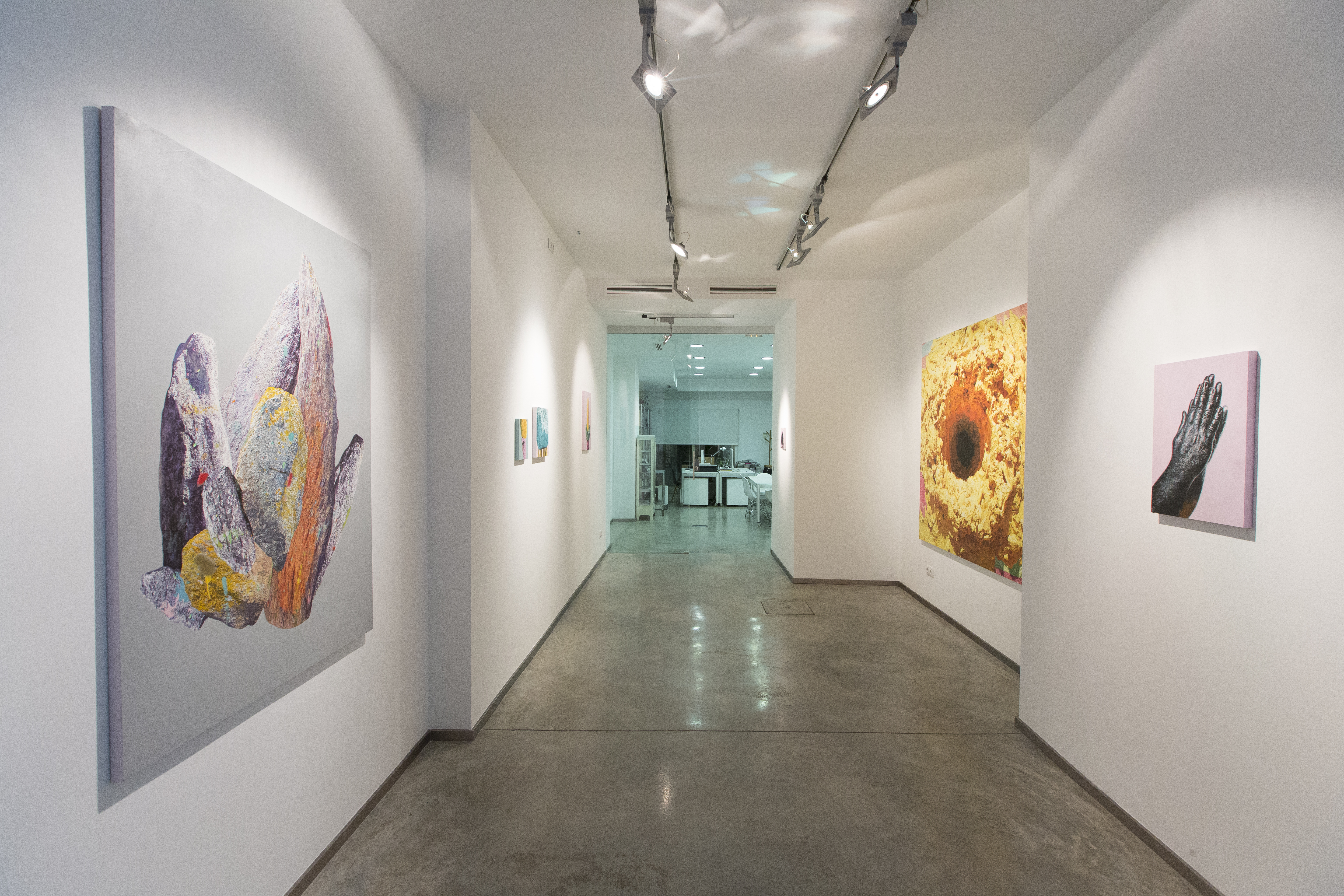
Magic Dolmen de Javier Palacios at Espai Tactel (Photo: Espai Tactel)
One of the younger galleries born out of Ruzafa’s growing artist population, Espai Tactel (Carrer de Dénia, 25) has quickly become known for its experimentation and forward-thinking approach to art. Over the year, the programme contains six exhibitions featuring new international and local up-and-coming names.
Accommodation
Ruzafa’s independent, hipster vibe is tangible in the barrio’s lack of big box hotels, leaving visitors to stay in chic aparthotels and hostels. Sohotel Ruzafa (Gran Via de les Germanies, 32) offers serviced apartments including a penthouse suite with a modern luxury design that can sleep up to five adults. There’s also a sun terrace where you can enjoy self-catered breakfast or drinks.
The thoughtful extra touches at the Petit Palace Ruzafa (Carrer de Sueca, 14) make this the go-to boutique hotel in Ruzafa. You will be welcomed with petit four cakes in your well-appointed room upon arrival and free coffee, tea, bicycle and iPad rentals are available throughout your stay.
For the backpacker on a budget, the Russafa Youth Hostel (Carrer del Pare Perera, 5) is bright, colourful, and well-located for exploring Ruzafa. Rooms are simple, ranging from private rooms to three-bed dormitories. The property serves breakfast every day and provides free Wi-Fi.
Shopping
The popular upscale lifestyle store Gnomo (Carrer de Cuba, 32) recently opened in a new location, but the owners have kept all the originality and colour it’s become known for. White walls with splashes of blue and green highlight the selection of fun prints, plants, books, and home décor items created by local designers and artists.
Valencia in the 15th and 16th centuries was a major centre in the trade of silk. It’s no surprise then that textiles are one of the region’s main industries and exports—and when it comes to vintage shopping, Ruzafa will make it onto any fashionista’s list. Locals love Madama Mim (Calle Puerto Rico, 30) for the quirky displays on second-hand clothes, jewellery, and other ‘freaky’ bric-a-brac.
The Carbonell family has been producing traditional Spanish hand fans (abanicos) since 1810. Two generations of Carbonells contribute to the creations at Abanicos Carbonell (Carrer de Castelló, 21), with Guillermo crafting both modern and traditional fans and his daughter Paula painting the delicate motifs.
The chic clothing and design shop La Boulangerie (Plaça del Dr. Landete, 3) is housed in an old bakery. Behind the main shop, the owner has retained the original machines and oven, which now serve as an event and gallery space. Choose among the contemporary clothes, accessories, and décor items for yourself or pick up a unique, locally crafted gift for someone at home.
